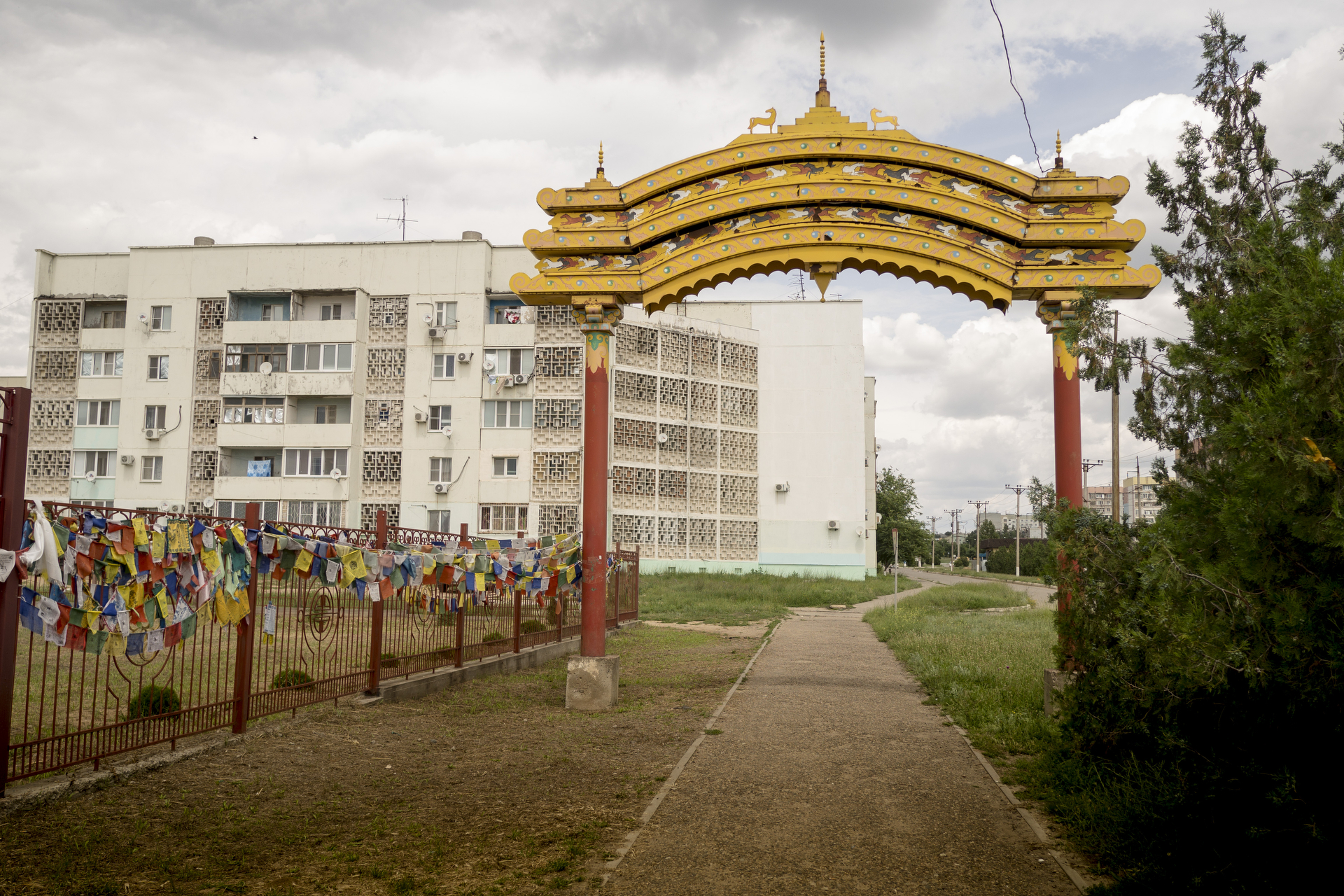
Traditional buddhist architecture is found on Kalmykia's capital city Elista. Mongolian and buddhist heritage is mix with the communist and Russian legacy. Elista, Russia, May 2016.
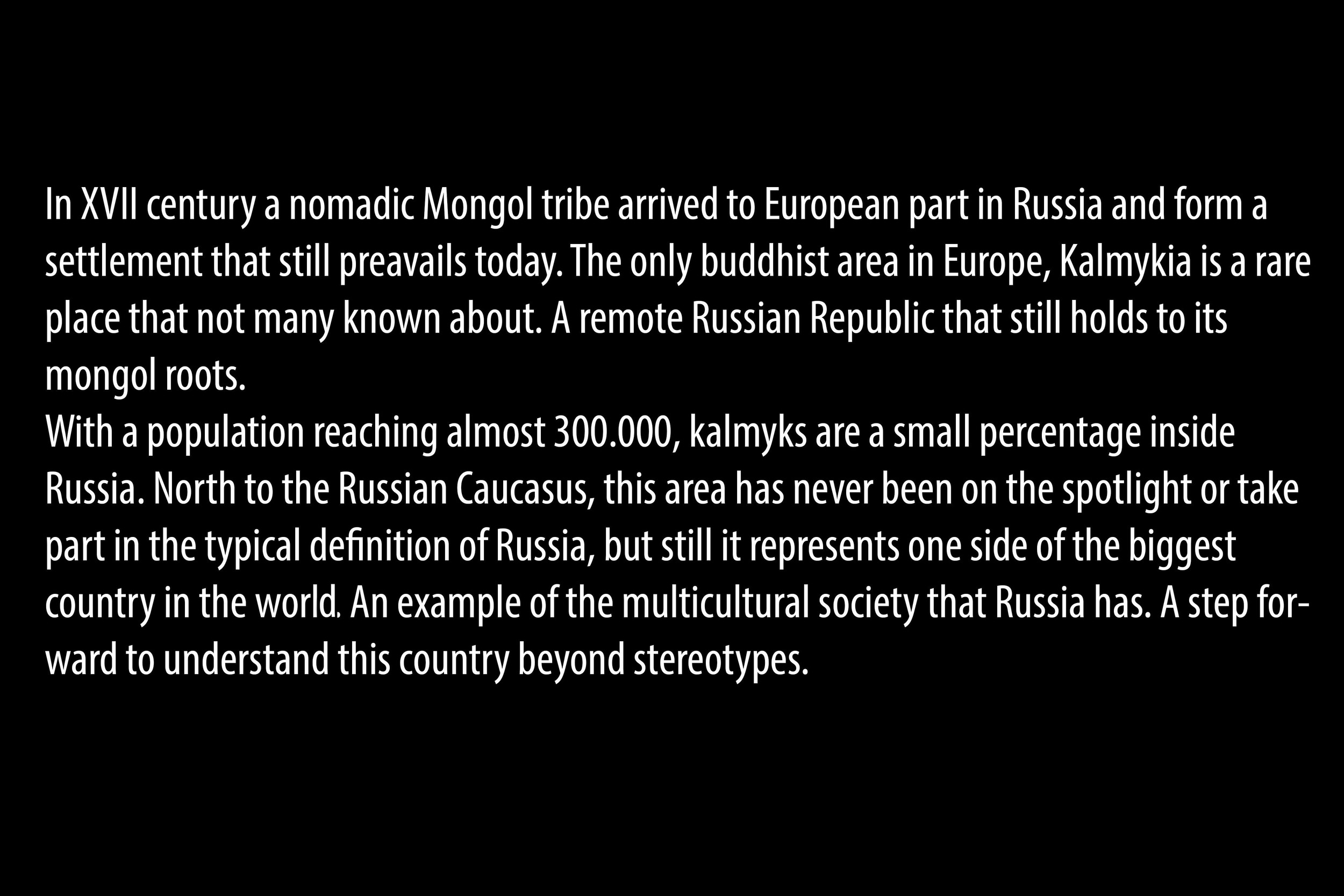
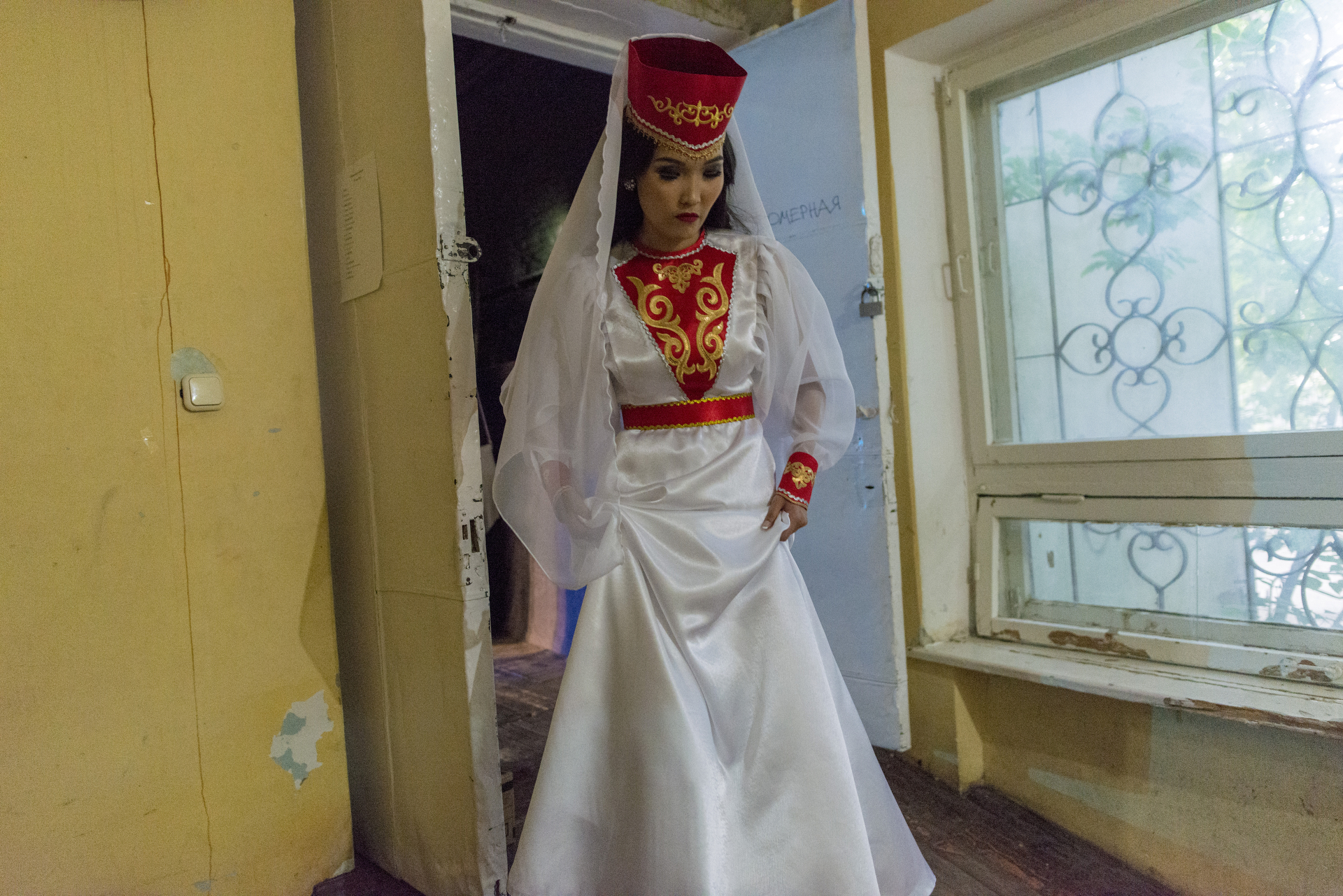
Woman wearing the traditional kalmyk dress at the backstage of the Philharmonic Theatre. Elista, Russia, May 2016.
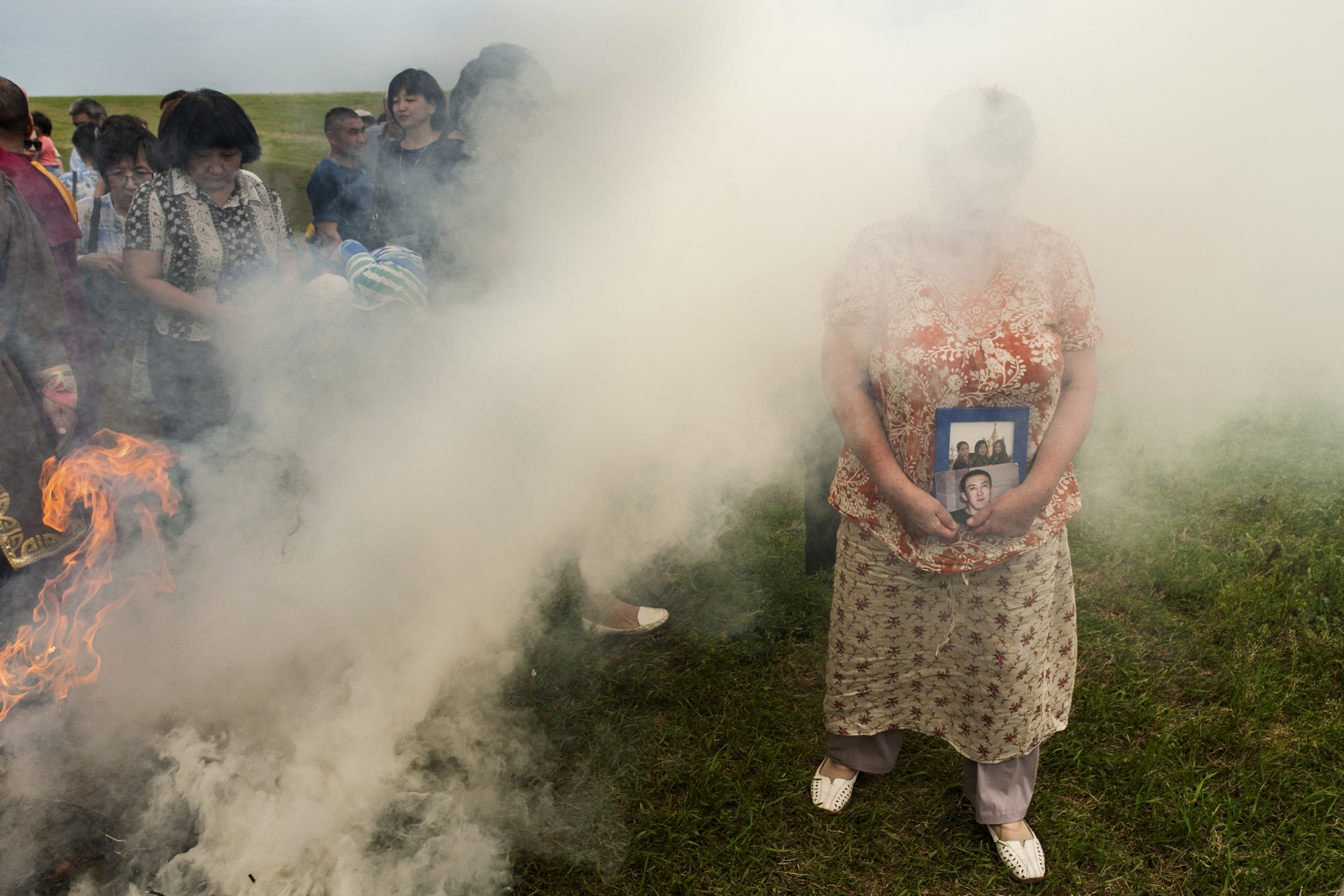
A woman carrying pictures of her beloved ones is walking trough a sacred bonfire smoke. It's believed this buddhist ritual gives good luck and fortune. Elista, Russia, May 2016.

A natural spring in the middle of the kalmyk's steppe is believed to have therapeutic properties. Kalmykia's landscape is a huge steppe of 76100 sq km. With barely a hill surpassing the 200 m high. European Kalmykia's scenery is close to the one found in the original Mongolian steppes. One of the reason, some say, these tribes decided to stay here. Kalmykia, Russia, May 2016.
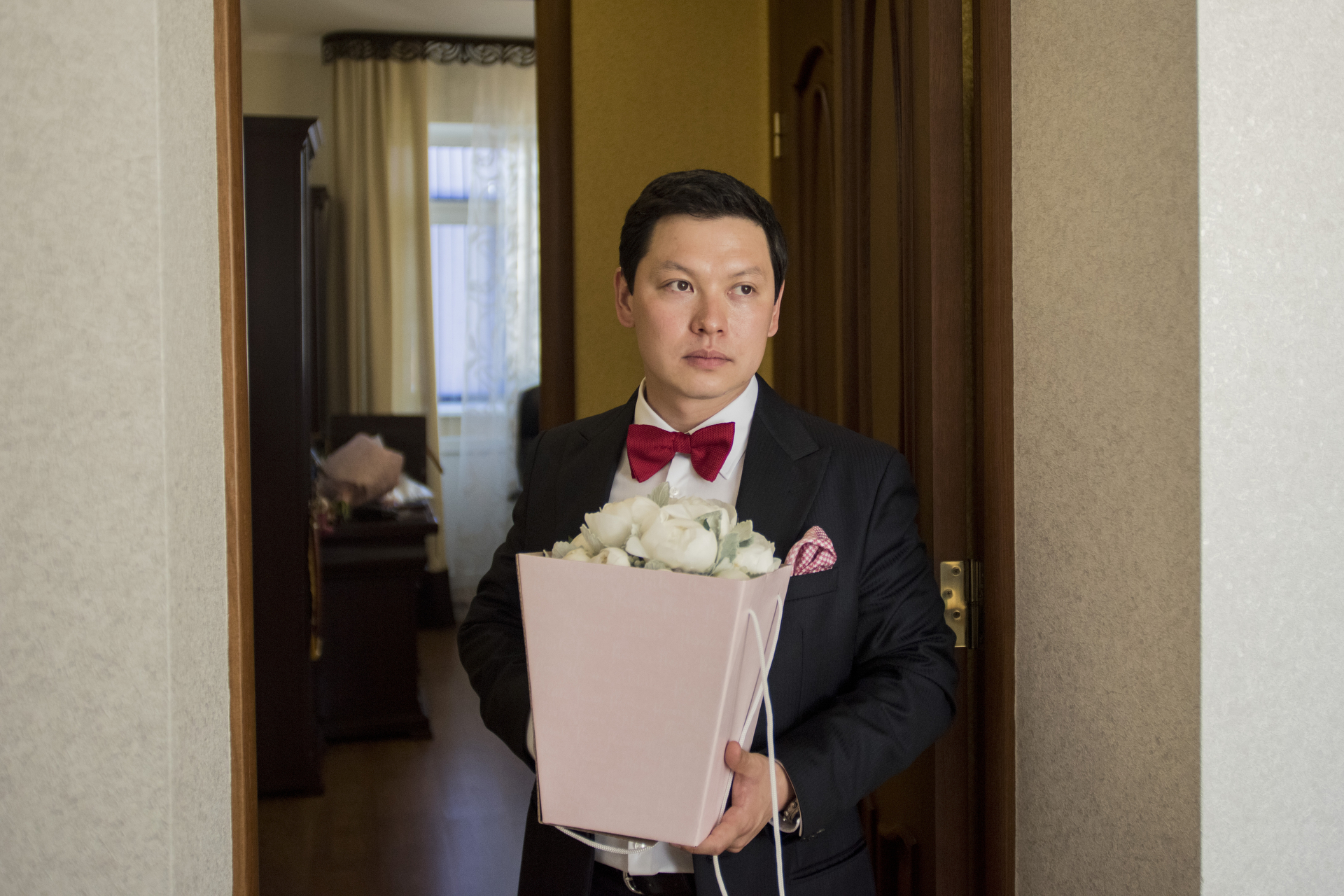
Alexey Makarov carrying a wedding bouquet. The tradition in Kalmykia states that before the ceremony the groom has to pick up the bride from her parents home. Kalmyk's has abandoned most Mongolian wedding traditions to a more international approach of the celebration. Elista, Russia, June 2016.
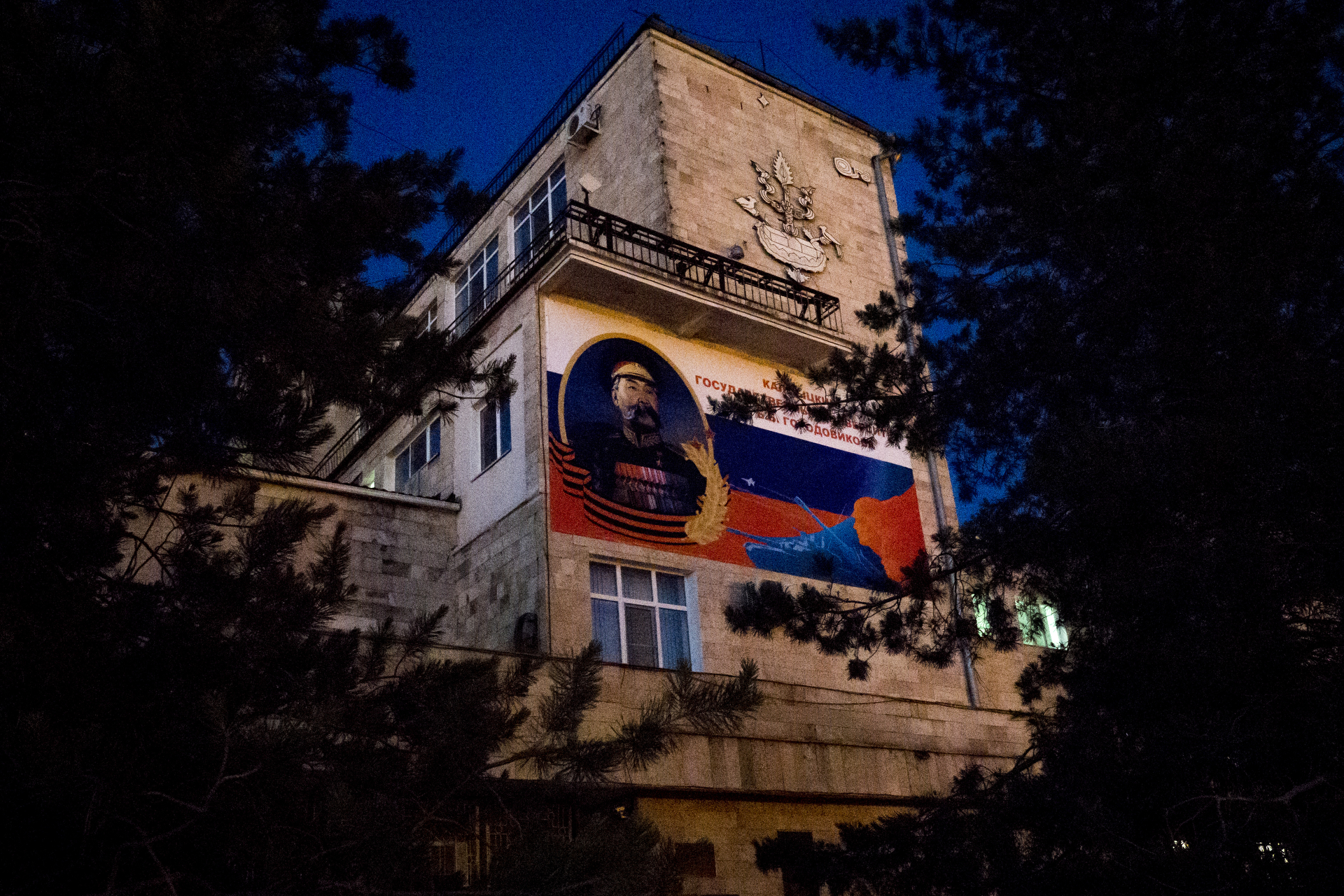
A poster of B.B.Godorovikov in Kalmyk State University. As a hero of Soviet Union, Godorovikov was the first secretary of the communist party committee in Kalmykia during the 60s and is still seen for many kalmyks as the most prominent kalmyk figure, achieving the reconstruction of the republic after the World War II. Elista, Russia, May 2016.
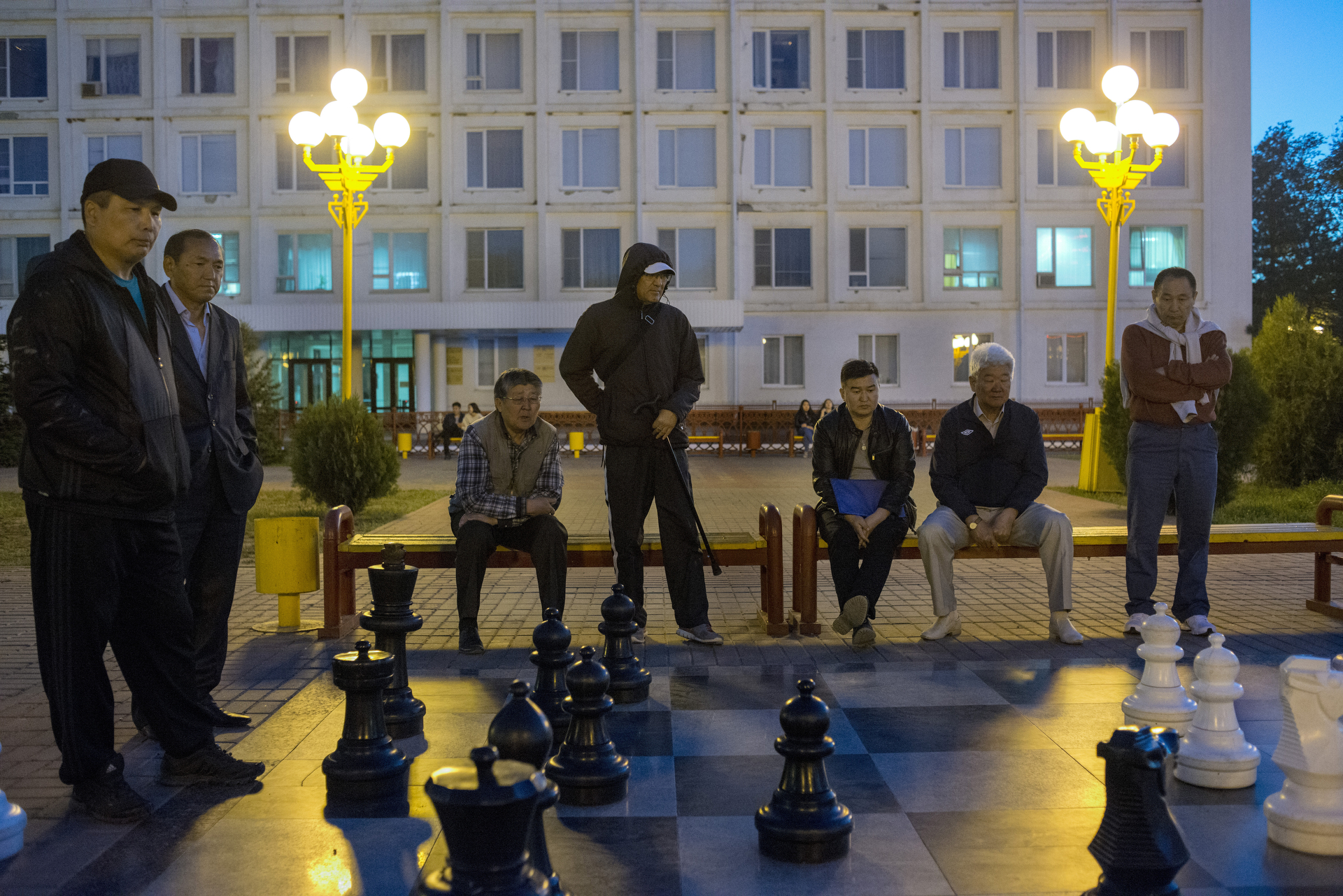
Men playing chess in the central square of Lenin. Chess became the national sport in Kalmykia after the former republic's president, Kirsan Ilyumzhinov, actual president of the FIDE, and who ruled the republic for 17 years, encouraged chess at all society levels. Elista, Russia, May 2016.
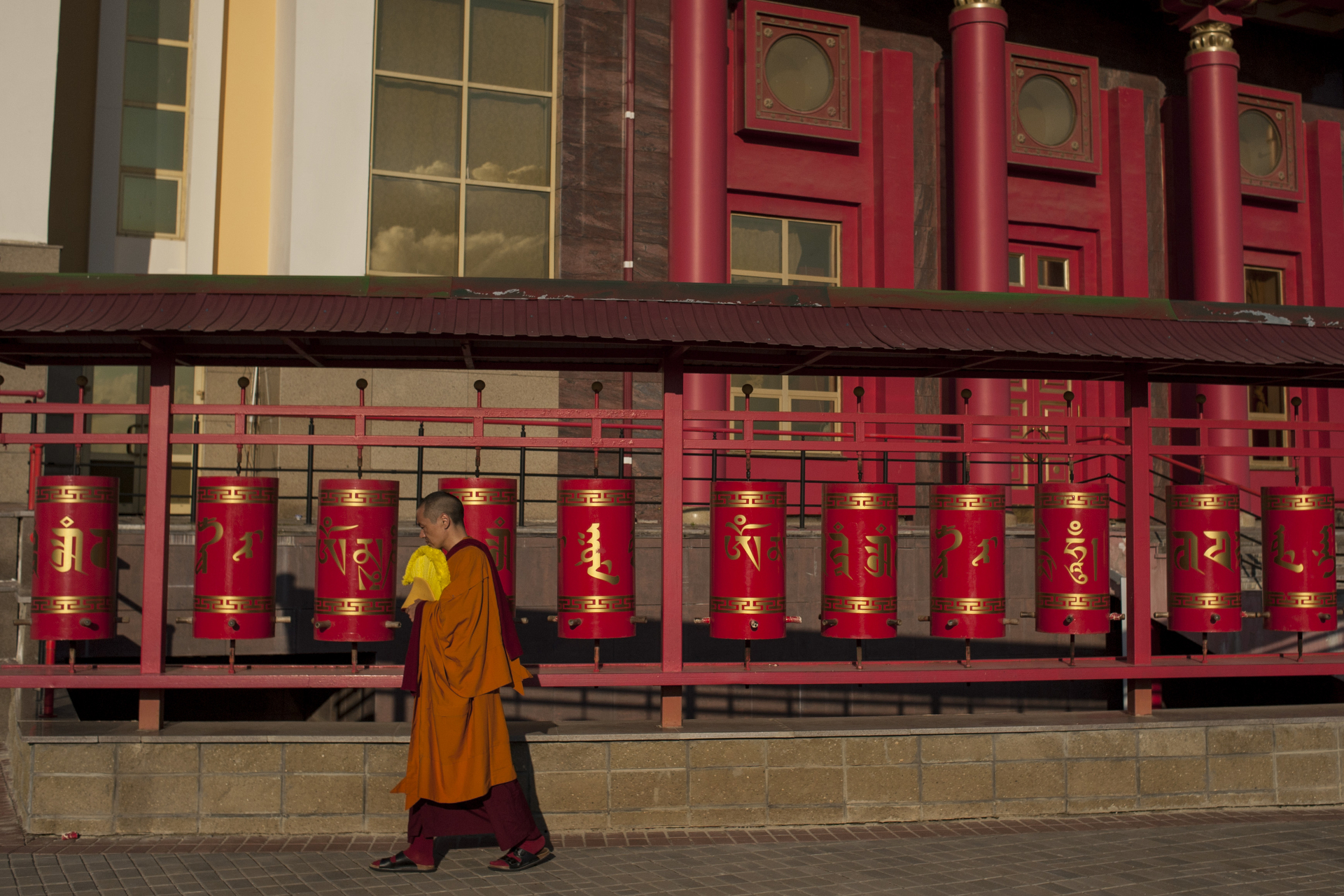
A buddhist monk at the Golden Adobe of Buddha Shakyamuni Temple, build in 2005 it remains the biggest buddhist temple in Europe. Elista, Russia, May 2016.

A memorial for Kalmyk soldiers who fought in the Soviet Red Army against Nazi Germany during WWII. Known as the Hero's alley, this place is devoted to all the fallen soldiers who fought in all the different wars that Russia took part in XX century. Elista, Russia, June 2016.
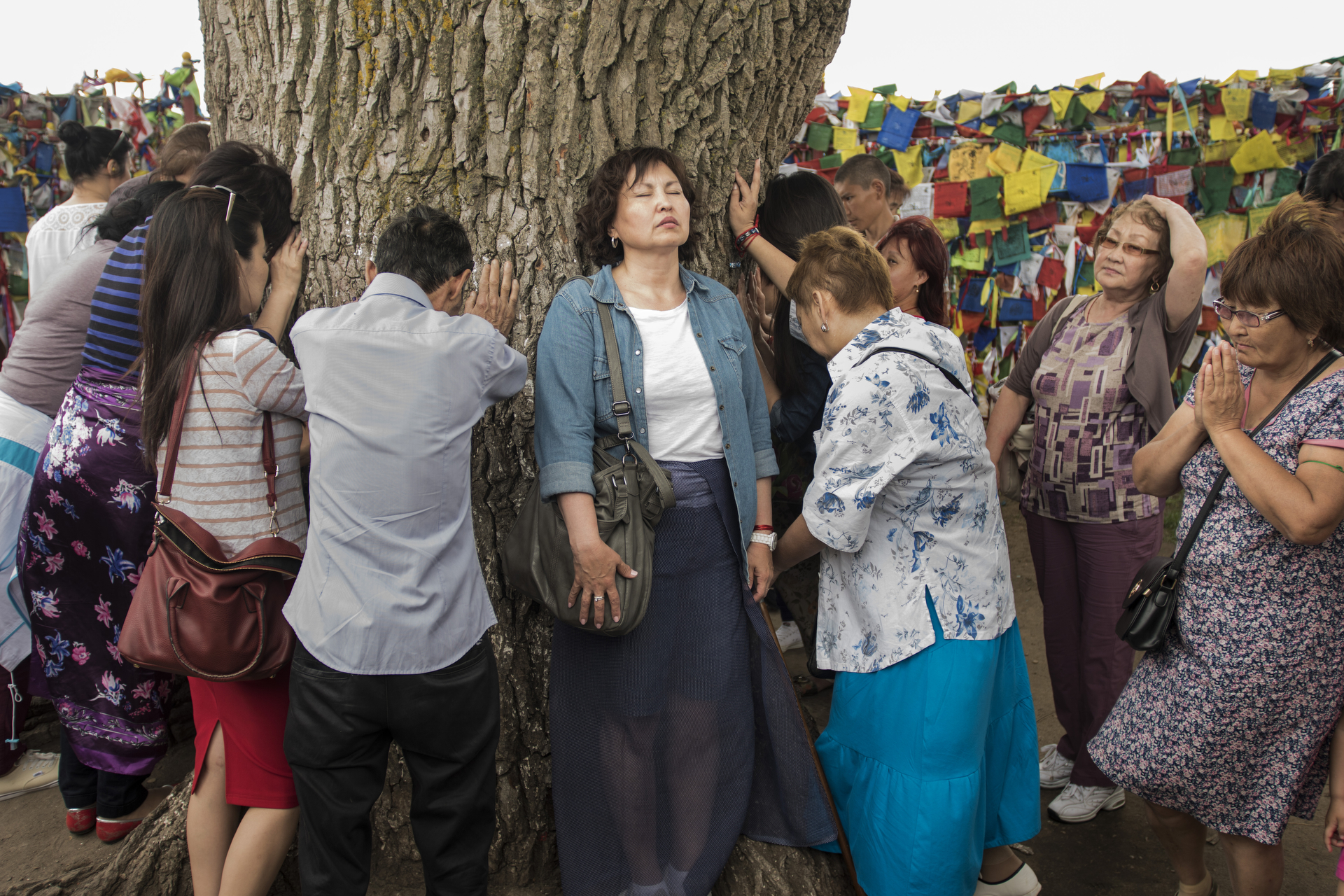
The Lone Poplar tree is a natural monument in the middle of the kalmyk steppe. Planted by a buddhist monk in 1846, and close to Khar-Buluk village, it remains a sacred place. Every May a pilgrimage takes place to worship the tree which it's believed to have magical powers. Kalmykia, Russia, May 2016.
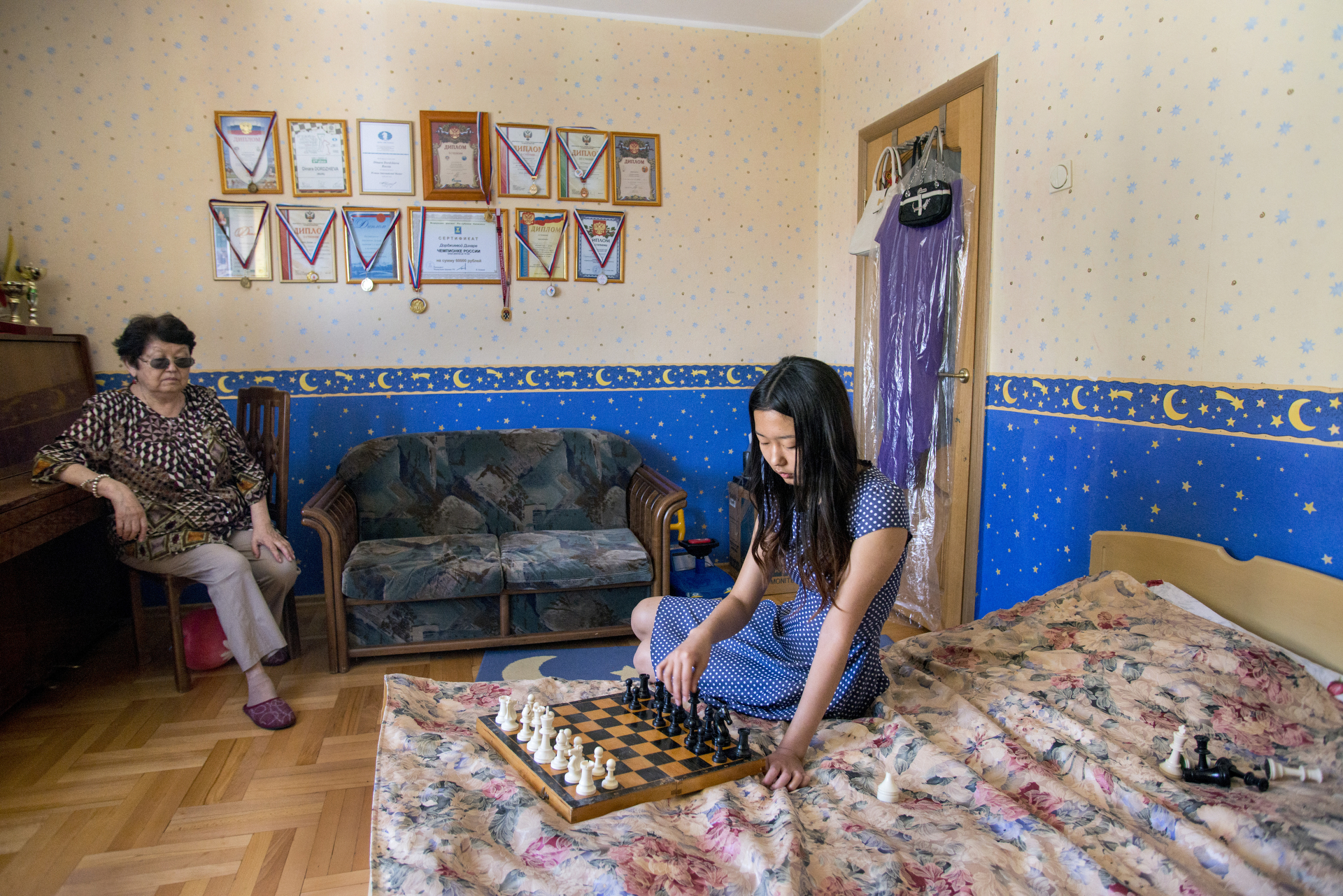
Dinara Dordzhieva (17) is a chess master who is second best female player in Russia under 18 and number 8 in the world. A prominent chess player from Kalmykia and considered the greatest promise to came out since chess became the national obsession. Elista, Russia, June 2016.
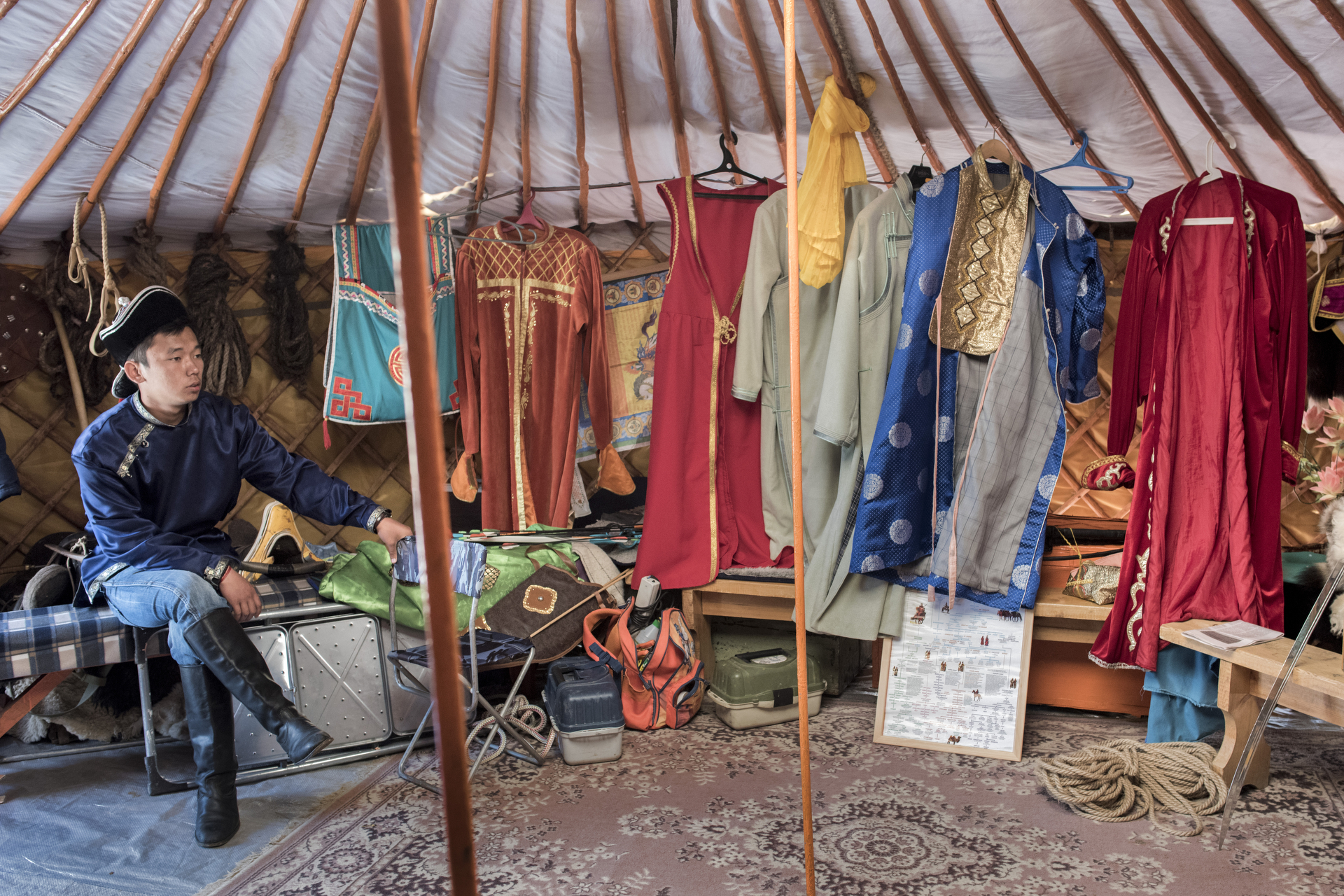
Valery runs a small museum of Mongolian traditions inside a Yurt, typical mongolian tent, in the city of Elista. Outside the regular tourist circuit, the small tourism business in the republic is focused to russian people and other central asian countries tourists. Elista, Russia, May 2016.

Bazyrsad is a buddhist monk from Elista. Apart to be spiritual guides, buddhist monks have also a counsellor role for people. Buddhist of Kalmykia invite monks at home and ask them for any kind of advice, acting sometimes more as psychologists or a fortune tellers than religious leaders. Elista, Russia, June 2016.
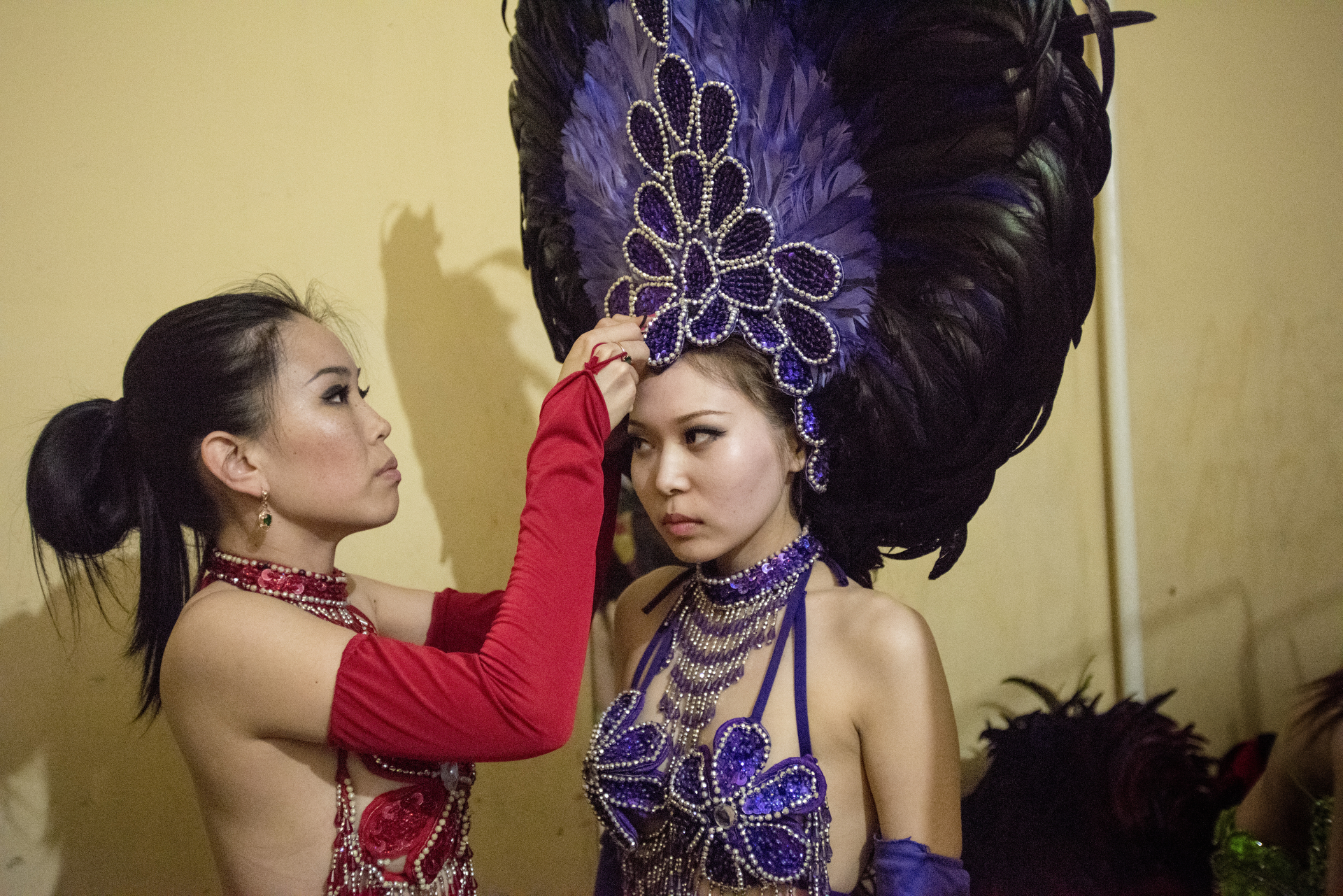
Two members of the Empire Dance Ballet Show are getting ready to perform. With their Carnaval Brazilian style, this company is well known in Elista and usually performs in all kinds of public events, parades, parties and weddings. Elista, Russia, May 2016.

Irina Sanzhiraeva during the swim suit show of Treasure of Kalmykia, a beauty Contest held in Elista. Irina won the contest and the right to represent the republic in the Russian national beauty contest. Elista, Russia, May 2016.
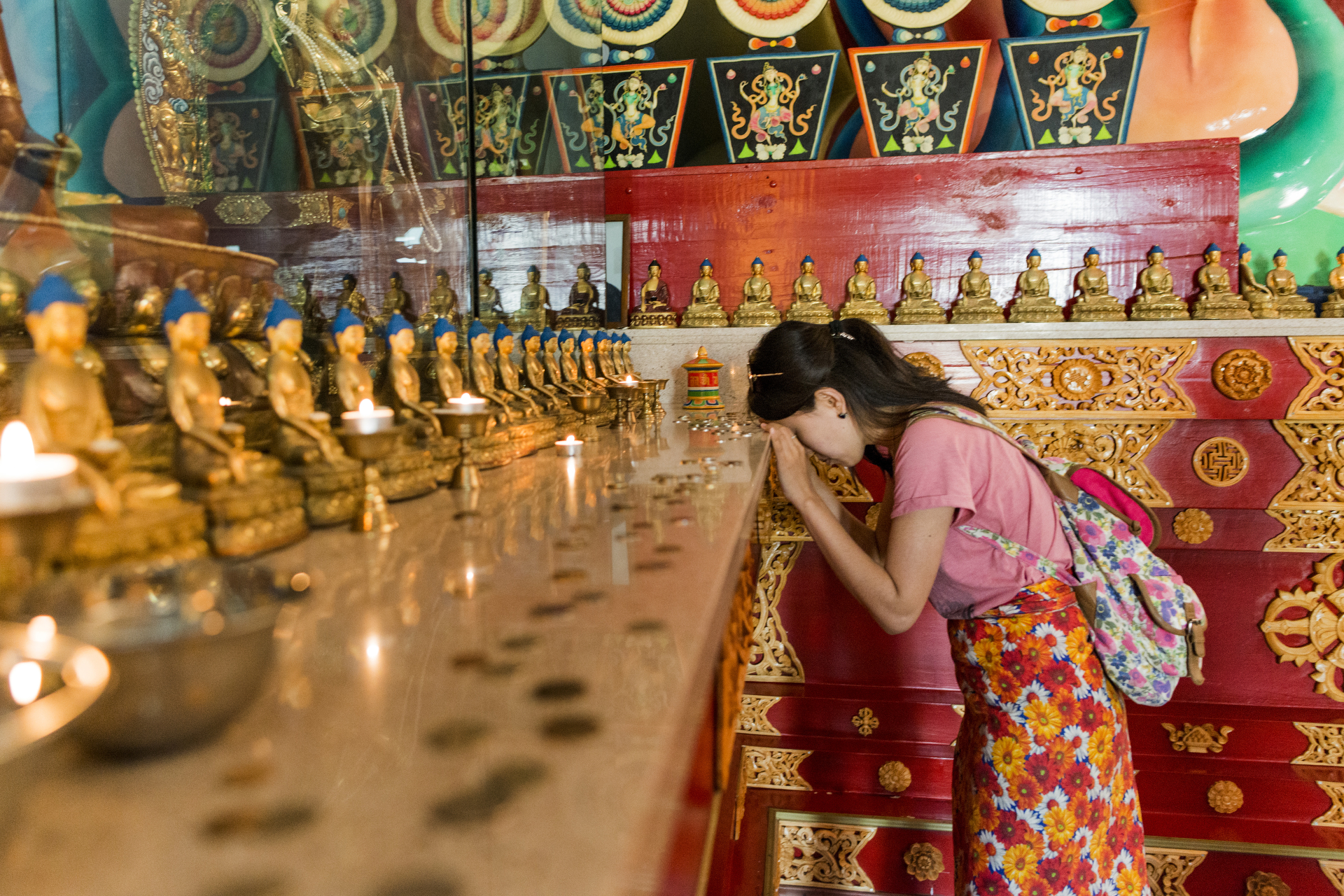
A young woman prays inside the main Buddhist temple of Elista, know locally as a Khurul, in Elista, Russia, June 2016.
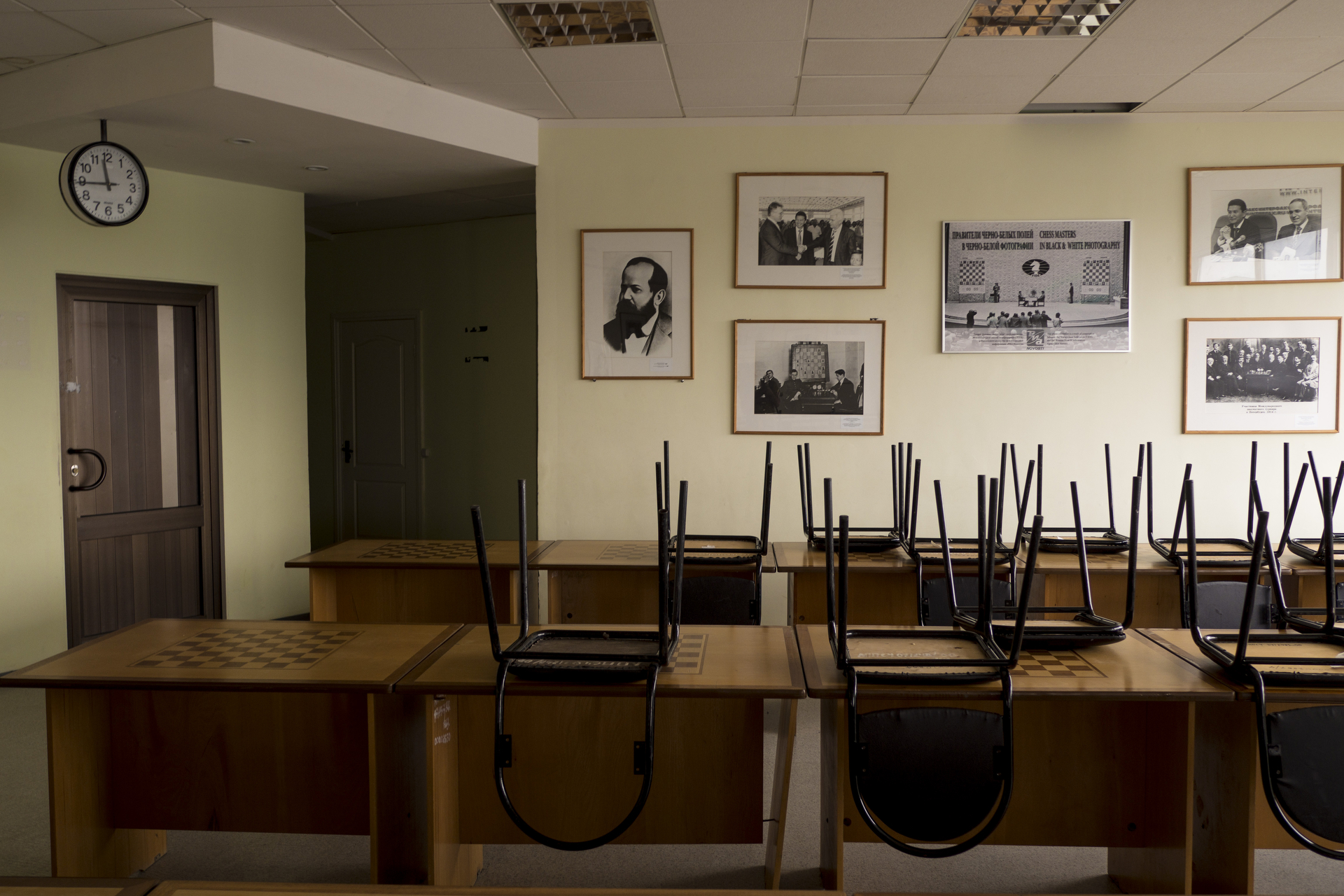
A practice room in City Chess Hall is used as a place for kids to learn chess. The main building of the City Chess, a complex dedicated to chess sport, also holds a museum dedicated to chess sport and it's one of the most representative tourist attractions in the city. Elista, Russia, June 2016.
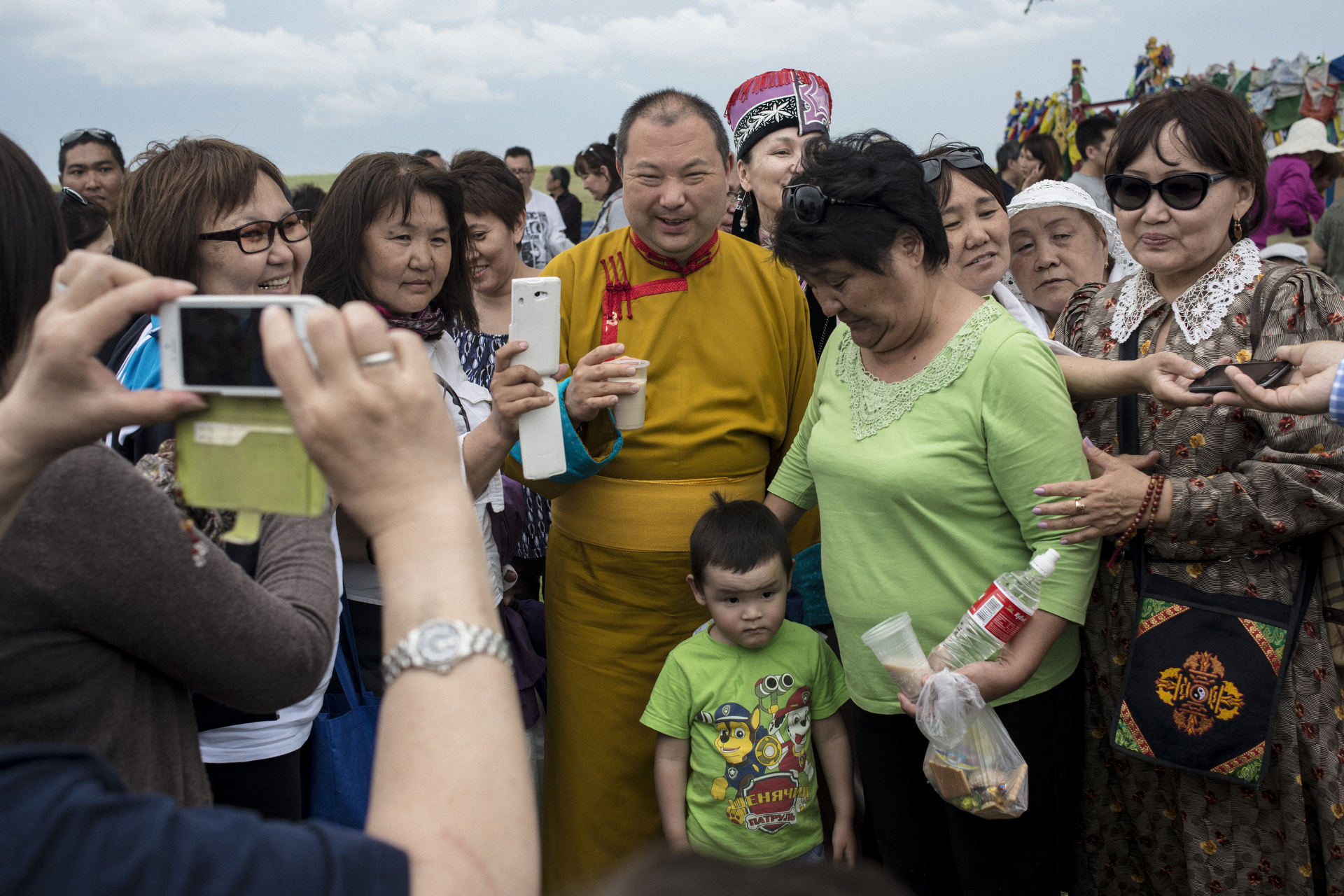
Erdne Ombadykow (center) is the religious leader and spiritual head of buddhist kalmyks. Most know as Telo Tulku Rimpoche, he is the 14th successor of Dalai Lama. Born in USA from kalmyks immigrants he share his life between Elista and Erie, Colorado, USA, where he lives with his wife and children. Elista, Russia, May 2016.

2 traditional Mongolian horse riders in the steppe of Kalmykia. The horse culture of Mongolians is still prevalent among kalmyks today. There is no celebration or public event without horses being present. Kalmykia, Russia, May 2016.

Bairta Onguldusheva stands next to a painting of Genghis Khan. The nomad tribes that arrived almost 400 years ago settled and abandoned the nomadic life, still Kalmyks feel part of the Mongolian heritage and more close to it than Russian culture. Elista, Russia, June 2016.





















Traditional buddhist architecture is found on Kalmykia's capital city Elista. Mongolian and buddhist heritage is mix with the communist and Russian legacy. Elista, Russia, May 2016.
Woman wearing the traditional kalmyk dress at the backstage of the Philharmonic Theatre. Elista, Russia, May 2016.
A woman carrying pictures of her beloved ones is walking trough a sacred bonfire smoke. It's believed this buddhist ritual gives good luck and fortune. Elista, Russia, May 2016.
A natural spring in the middle of the kalmyk's steppe is believed to have therapeutic properties. Kalmykia's landscape is a huge steppe of 76100 sq km. With barely a hill surpassing the 200 m high. European Kalmykia's scenery is close to the one found in the original Mongolian steppes. One of the reason, some say, these tribes decided to stay here. Kalmykia, Russia, May 2016.
Alexey Makarov carrying a wedding bouquet. The tradition in Kalmykia states that before the ceremony the groom has to pick up the bride from her parents home. Kalmyk's has abandoned most Mongolian wedding traditions to a more international approach of the celebration. Elista, Russia, June 2016.
A poster of B.B.Godorovikov in Kalmyk State University. As a hero of Soviet Union, Godorovikov was the first secretary of the communist party committee in Kalmykia during the 60s and is still seen for many kalmyks as the most prominent kalmyk figure, achieving the reconstruction of the republic after the World War II. Elista, Russia, May 2016.
Men playing chess in the central square of Lenin. Chess became the national sport in Kalmykia after the former republic's president, Kirsan Ilyumzhinov, actual president of the FIDE, and who ruled the republic for 17 years, encouraged chess at all society levels. Elista, Russia, May 2016.
A buddhist monk at the Golden Adobe of Buddha Shakyamuni Temple, build in 2005 it remains the biggest buddhist temple in Europe. Elista, Russia, May 2016.
A memorial for Kalmyk soldiers who fought in the Soviet Red Army against Nazi Germany during WWII. Known as the Hero's alley, this place is devoted to all the fallen soldiers who fought in all the different wars that Russia took part in XX century. Elista, Russia, June 2016.
The Lone Poplar tree is a natural monument in the middle of the kalmyk steppe. Planted by a buddhist monk in 1846, and close to Khar-Buluk village, it remains a sacred place. Every May a pilgrimage takes place to worship the tree which it's believed to have magical powers. Kalmykia, Russia, May 2016.
Dinara Dordzhieva (17) is a chess master who is second best female player in Russia under 18 and number 8 in the world. A prominent chess player from Kalmykia and considered the greatest promise to came out since chess became the national obsession. Elista, Russia, June 2016.
Valery runs a small museum of Mongolian traditions inside a Yurt, typical mongolian tent, in the city of Elista. Outside the regular tourist circuit, the small tourism business in the republic is focused to russian people and other central asian countries tourists. Elista, Russia, May 2016.
Bazyrsad is a buddhist monk from Elista. Apart to be spiritual guides, buddhist monks have also a counsellor role for people. Buddhist of Kalmykia invite monks at home and ask them for any kind of advice, acting sometimes more as psychologists or a fortune tellers than religious leaders. Elista, Russia, June 2016.
Two members of the Empire Dance Ballet Show are getting ready to perform. With their Carnaval Brazilian style, this company is well known in Elista and usually performs in all kinds of public events, parades, parties and weddings. Elista, Russia, May 2016.
Irina Sanzhiraeva during the swim suit show of Treasure of Kalmykia, a beauty Contest held in Elista. Irina won the contest and the right to represent the republic in the Russian national beauty contest. Elista, Russia, May 2016.
A young woman prays inside the main Buddhist temple of Elista, know locally as a Khurul, in Elista, Russia, June 2016.
A practice room in City Chess Hall is used as a place for kids to learn chess. The main building of the City Chess, a complex dedicated to chess sport, also holds a museum dedicated to chess sport and it's one of the most representative tourist attractions in the city. Elista, Russia, June 2016.
Erdne Ombadykow (center) is the religious leader and spiritual head of buddhist kalmyks. Most know as Telo Tulku Rimpoche, he is the 14th successor of Dalai Lama. Born in USA from kalmyks immigrants he share his life between Elista and Erie, Colorado, USA, where he lives with his wife and children. Elista, Russia, May 2016.
2 traditional Mongolian horse riders in the steppe of Kalmykia. The horse culture of Mongolians is still prevalent among kalmyks today. There is no celebration or public event without horses being present. Kalmykia, Russia, May 2016.
Bairta Onguldusheva stands next to a painting of Genghis Khan. The nomad tribes that arrived almost 400 years ago settled and abandoned the nomadic life, still Kalmyks feel part of the Mongolian heritage and more close to it than Russian culture. Elista, Russia, June 2016.